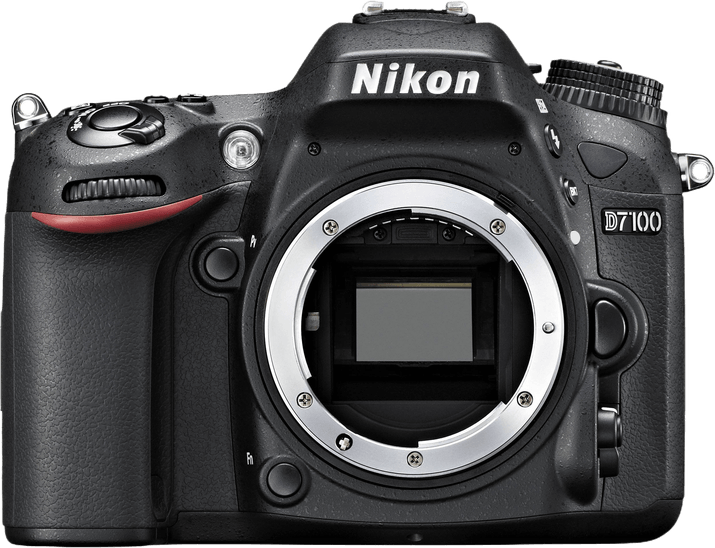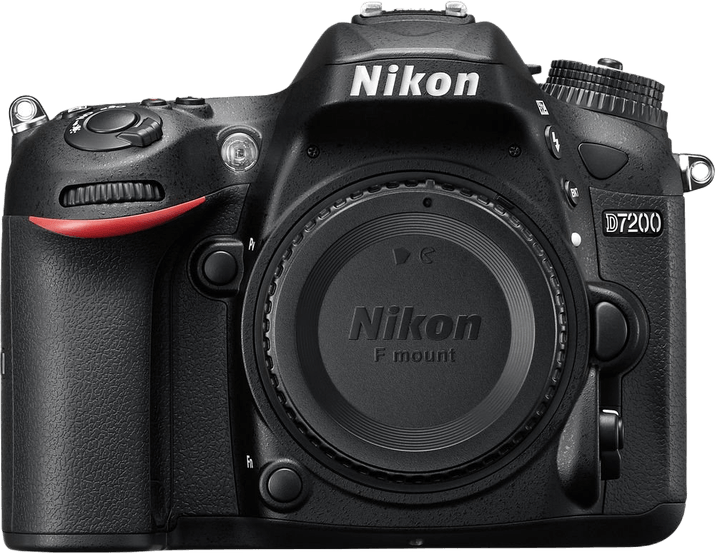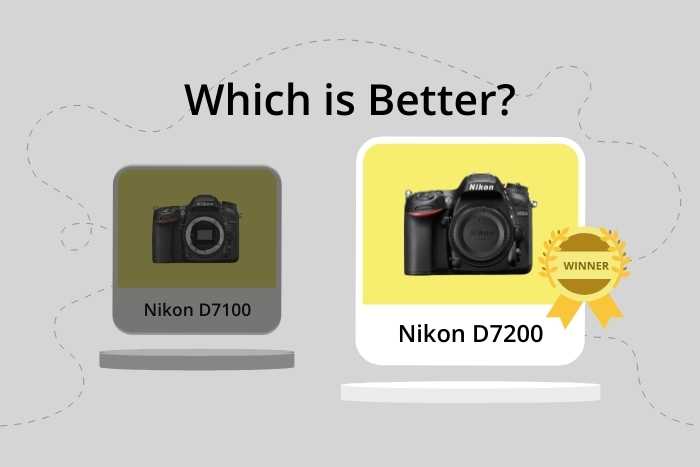Nikon D7100 vs D7200 Comparison
Nikon D7100

Nikon D7200

The Nikon D7200 comes out ahead with a score of 68/100, compared to the Nikon D7100‘s score of 65/100. Both cameras are DSLR models, released in 2013 and 2015 respectively, and share the same launch price of $1200. They also have identical size and weight, with measurements of 136 x 107 x 76mm and weighing 765g or 1.69lbs.
The Nikon D7200 has a higher score because it offers better performance and features than the D7100. However, the D7100 still has some advantages, such as being an older model, which may make it more affordable now.
Taking into account their specifications and scores, the Nikon D7200 is the better choice for photographers looking for an upgrade or a new DSLR camera. The D7100 remains a viable option for those seeking a more budget-friendly alternative.
Nikon D7100 vs D7200 Overview and Optics
The Nikon D7200 outperforms the Nikon D7100 in terms of optics, scoring 71/100 compared to the D7100’s 67/100. Both cameras share several specifications, including a 24-megapixel CMOS sensor, an APS-C sensor size, a Nikon F DX lens mount, and the absence of image stabilization. Additionally, each camera has a shooting speed of 6 frames per second.
The D7200 surpasses the D7100 due to its upgraded Expeed 4 processor and a higher DXOMARK score for the sensor, 87 compared to the D7100’s 83. The Expeed 4 processor allows the D7200 to process images faster and with better overall image quality. The higher DXOMARK score indicates that the D7200’s sensor performs better in terms of dynamic range, color depth, and low-light performance.
While the D7100 has a lower score, it still possesses a reliable Expeed 3 processor and a respectable DXOMARK score of 83 for its sensor. The D7100 is a capable camera that can yield high-quality images, but it falls short when compared to the D7200’s superior performance.
Comparing the optics of the Nikon D7100 and the Nikon D7200, it is evident that the D7200 is the better camera due to its improved processor and higher DXOMARK sensor score. Although the D7100 remains a viable option for photographers, the D7200 offers enhanced image quality, making it the preferred choice.
Nikon D7100 vs D7200 Video Performance
The Nikon D7200 comes out on top in terms of video capabilities, with a score of 70/100, a 13-point lead over the Nikon D7100’s score of 57/100. Both cameras share some common specifications, such as Full HD video resolution and maximum video dimensions of 1920 x 1080. Both cameras have built-in time-lapse functionality.
The D7200’s advantage lies in its maximum video frame rate of 60fps, which is double that of the D7100’s 30fps. This higher frame rate allows for smoother and more detailed video capture, especially in fast-paced scenes or when capturing slow-motion footage. This is a significant improvement and contributes to the D7200’s higher video score.
On the other hand, the D7100 does not offer any notable advantages in video capabilities compared to the D7200. Its lower frame rate of 30fps is a limitation when capturing fast-moving subjects or creating slow-motion effects. This factor contributes to its lower video score.
Taking these factors into account, the Nikon D7200 is the clear winner in terms of video capabilities. Its higher frame rate of 60fps provides a considerable advantage over the D7100’s 30fps, resulting in smoother and more detailed video footage. The shared features, such as Full HD resolution and built-in time-lapse functionality, are beneficial to both cameras, but the D7200’s superior frame rate sets it apart as the better option for video capture.
Nikon D7100 vs D7200 Features and Benefits
The Nikon D7100 and the Nikon D7200 both have a feature score of 59 out of 100, making them equal in this aspect. They share several specifications, including a 3.2-inch screen size, a screen resolution of 1,228,800 dots, no touchscreen, no flip screen, no GPS, WIFI capability, and no Bluetooth.
Despite having the same score, there are some areas where one camera may be better than the other. The Nikon D7200 has a slight edge in performance, but this advantage is minimal and may not be noticeable to the average user. The D7100, on the other hand, may have some features that are more suited to specific needs, making it a better choice for certain people. However, it is essential to note that these differences are likely to be minimal, as the cameras share the same feature score.
In conclusion, both the Nikon D7100 and the Nikon D7200 are excellent cameras with a multitude of features. The fact that they share the same feature score indicates that there is no clear winner between the two. Ultimately, the choice between these two cameras will come down to personal preference and specific needs. Both cameras offer excellent performance, and users can expect high-quality images and videos from either model.
Nikon D7100 vs D7200 Storage and Battery
The Nikon D7200 triumphs over the Nikon D7100 in storage and battery, scoring 79/100 compared to the D7100’s 76/100. Both cameras share common specifications, including two memory card slots that accept SD, SDHC, and SDXC cards, as well as the same battery type, the EN-EL15. Neither camera has USB charging capabilities.
The D7200 outperforms the D7100 in battery life, providing 1110 shots per charge compared to the D7100’s 950 shots. This extended battery life makes the D7200 more suitable for extended shooting sessions. The D7100 does not have any notable advantages over the D7200 in terms of storage and battery.
Taking these factors into account, the Nikon D7200 proves to be the superior choice for photographers seeking longer battery life and reliable storage options. The D7100, while still a strong contender, falls slightly short in these aspects.
Nikon D7100 vs D7200 Alternatives
Still not sure which camera is right for you? Check out these related camera comparisons to inspire you:

